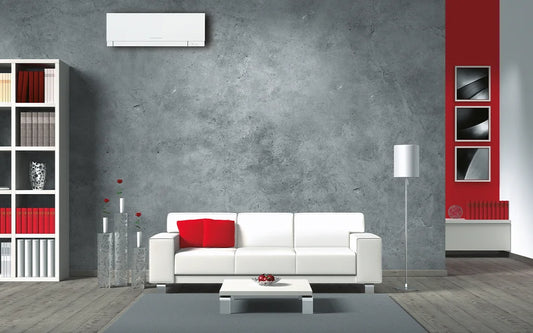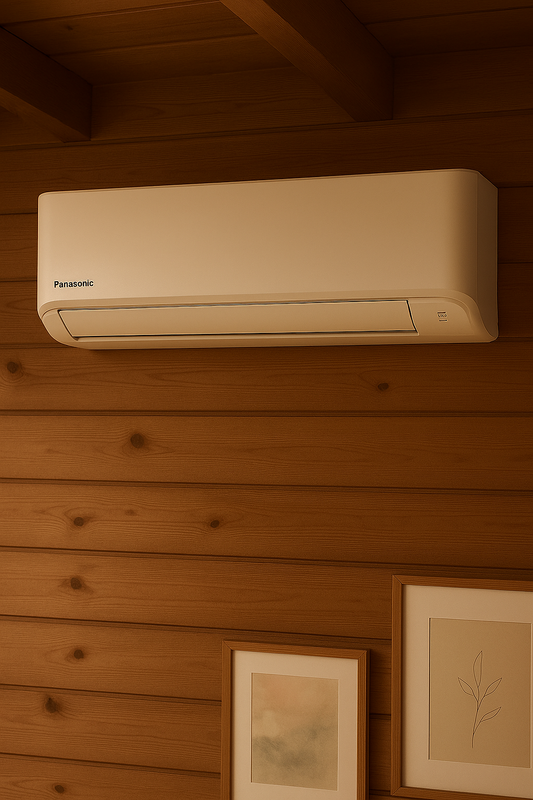Luftvärmepump enkel installation
En luftvärmepump med enkel installation är en effektiv och miljövänlig lösning för att värma upp ett hem eller en annan byggnad. Denna typ av värmepump använder utomhusluften som energikälla och kan installeras med relativt små ingrepp i fastigheten. I denna artikel kommer vi att utforska definitionen, fördelarna, användningsområdena, relaterade tekniker och vanliga frågor kring luftvärmepumpar med enkel installation.
Definition och bakgrund
En luftvärmepump är en anordning som använder sig av utomhusluftens värmeenergi för att värma upp inomhusutrymmen. Genom en enkel installation kan denna typ av värmepump installeras på ett effektivt sätt utan att behöva genomföra omfattande byggtekniska åtgärder. Genom att dra nytta av den omgivande luften kan luftvärmepumpen leverera värme till ett hem eller en byggnad med minimal påverkan på miljön.
Fördelar och användningsområden
Luftvärmepumpar med enkel installation erbjuder flera fördelar. För det första är de relativt enkla att installera, vilket kan minska kostnaderna för installation och drift. Dessutom kan de vara ett kostnadseffektivt alternativ för uppvärmning jämfört med traditionella värmesystem. Luftvärmepumpar kan också bidra till att minska energiförbrukningen och därigenom sänka kostnaderna för hushållet.
Luftvärmepumpar med enkel installation används främst för att värma upp bostäder, men de kan även vara lämpliga för mindre kommersiella eller industriella utrymmen. Deras förmåga att dra nytta av omgivande luft gör dem särskilt användbara i områden med måttliga klimatförhållanden.
Relaterade tekniker, begrepp eller variationer
Det finns flera olika typer av värmepumpar som kan vara relevanta att nämna i samband med luftvärmepumpar med enkel installation. En sådan typ är bergvärmepumpar, som utvinner värmeenergi från marken istället för från luften. En annan variant är luft-vatten-värmepumpar, som använder utomhusluften för att värma upp vatten istället för att direkt värma upp inomhusutrymmen.
Vanliga frågor (FAQ)
-
Är luftvärmepumpar med enkel installation effektiva i kalla klimat?
Luftvärmepumpar kan vara effektiva i kalla klimat, men deras prestanda kan variera beroende på utomhustemperaturen. I områden med mycket låga temperaturer kan andra typer av värmepumpar vara mer lämpliga.
-
Hur lång är livslängden för en luftvärmepump med enkel installation?
Med regelbunden underhåll och korrekt användning kan en luftvärmepump med enkel installation ha en livslängd på upp till 15 år.
-
Finns det några miljömässiga fördelar med luftvärmepumpar?
Ja, luftvärmepumpar är miljövänliga eftersom de inte genererar koldioxidutsläpp vid uppvärmningsprocessen. De kan bidra till att minska en byggnads totala koldioxidavtryck.
Sammanfattning
Luftvärmepumpar med enkel installation är en effektiv och kostnadseffektiv lösning för uppvärmning av bostäder och mindre kommersiella utrymmen. Deras förmåga att dra nytta av utomhusluften gör dem särskilt lämpliga för områden med måttliga klimatförhållanden. Genom att förstå deras fördelar, användningsområden och relaterade tekniker kan fastighetsägare fatta välgrundade beslut när det gäller uppvärmningssystem.
Installation Process
The installation process for a simple air source heat pump is relatively straightforward and can be completed by a professional HVAC technician. It involves mounting the outdoor unit, connecting it to the indoor unit, and configuring the system for optimal performance. The simplicity of the installation process can reduce both the time and labor costs associated with implementing this heating solution.
Energy Efficiency
One of the key advantages of air source heat pumps is their energy efficiency. By harnessing the latent heat in the outdoor air, these systems can provide a sustainable heating solution while minimizing electricity consumption. This efficiency can lead to lower energy bills and reduced environmental impact, making air source heat pumps a compelling choice for eco-conscious homeowners and businesses.
Case Study: Residential Application
In a residential setting, a family in a moderate climate region opted to install a simple air source heat pump for their heating needs. The system proved to be effective in maintaining comfortable indoor temperatures while significantly reducing their heating costs. This case study exemplifies the practical benefits of opting for a straightforward air source heat pump installation.
Comparative Cost Analysis
When comparing the upfront and operational costs of air source heat pumps with other heating systems, it becomes evident that the simplicity of installation and the potential for energy savings make them a competitive choice. By analyzing the long-term financial implications, property owners can make informed decisions regarding their heating infrastructure.
Remote Monitoring and Control
Many modern air source heat pumps offer remote monitoring and control capabilities, allowing users to adjust settings and track performance from their smartphones or computers. This level of convenience and transparency enhances the overall user experience and enables proactive system management.
Enhanced Comfort Features
Some air source heat pumps come equipped with advanced features such as variable-speed compressors and zoning capabilities, which can further improve indoor comfort and energy efficiency. These technological advancements contribute to the appeal of air source heat pumps in the residential and commercial sectors.
Energy Efficiency in Various Climates
The energy efficiency of air source heat pumps can vary based on the climate in which they are installed. In moderate and warmer climates, these systems typically operate with high efficiency, providing substantial energy savings. However, in colder climates, the performance of air source heat pumps may decrease, leading to a higher reliance on supplementary heating sources.
Maintenance and Service Requirements
To ensure the continued efficiency and longevity of a simple air source heat pump, regular maintenance and servicing are essential. This may include tasks such as cleaning the outdoor unit, inspecting refrigerant levels, and verifying the integrity of electrical connections. By adhering to a comprehensive maintenance schedule, property owners can maximize the operational lifespan of their heating system.
Government Incentives and Rebates
In many regions, government bodies and energy authorities offer incentives and rebates for the installation of energy-efficient heating systems, including air source heat pumps. These financial incentives serve to promote the adoption of sustainable heating solutions and can significantly offset the initial investment associated with implementing a simple air source heat pump.
Noise Considerations
While air source heat pumps are generally designed to operate quietly, it's important for property owners to consider potential noise emissions, especially in residential settings. By selecting a model with low noise output and strategic placement of the outdoor unit, the impact on surrounding occupants can be minimized.
Integration with Existing Heating Infrastructure
In some scenarios, a simple air source heat pump may be integrated with an existing heating system to create a hybrid heating solution. This approach can provide flexibility and redundancy, ensuring consistent indoor comfort while optimizing energy usage based on external conditions.
Warranty and Support Services
When selecting a manufacturer or installer for a simple air source heat pump, it's advisable to review the available warranty coverage and support services. A comprehensive warranty and responsive customer support can offer peace of mind and assurance regarding the performance and reliability of the heating system.
Environmental Impact Assessment
Property owners considering the installation of a simple air source heat pump may conduct an environmental impact assessment to evaluate the potential benefits in terms of carbon footprint reduction and overall ecological sustainability. This assessment can inform decision-making and align with broader environmental stewardship goals.



